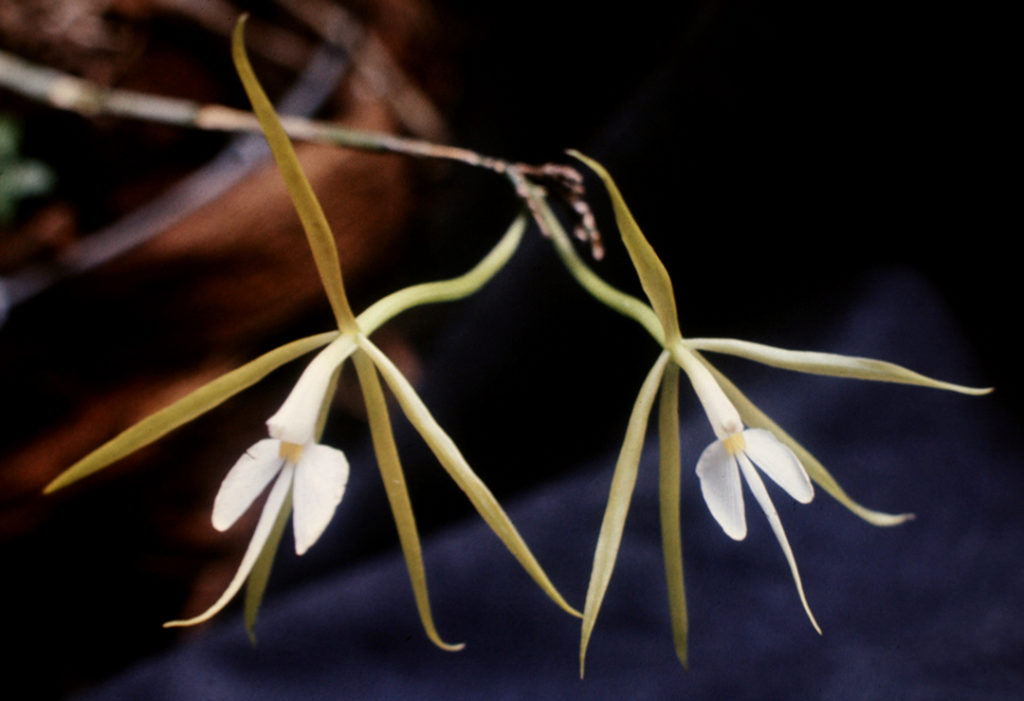
Belize
Orchid “Lady Of The Night”
Epidendrum nocturnum

General Description / Cultural Significance
The Orchid “Lady of the Night,” or Epidendrum nocturnum, is a species that produces greenish-white flowers between September through December and possesses an acute, sweet smell that is especially strong in the evening. Its leaves are distinctively dark green and elliptical-shaped, and it favors a mangrove environment but could also be found in more inland, forested areas. They are primarily prized for their beauty and are protected internationally as a result.
Climate Change/Conservation Status
As a low coastal nation, Belize is being exposed to a warming and rising sea, and the increasing frequency and intensity of tropical storms. In Belize the traditions and customs are aspects of their connection to the environment and preserving its unique gifts. It has done nothing to contribute to global warming, but now it also has little resources to mitigate the effects of ongoing natural disasters, such as hurricanes, rising sea levels, coastal erosion, droughts, and flooding, leading to the loss of distinctive and bio-rich ecosystems for which it is famous.
Rising temperatures have disrupted crop production and maize is at its limits of temperature tolerance. Sugar and banana production are being affected by saltwater entering river streams. The Belize Barrier Reef, a UNESCO World Heritage site, is the second largest in the world and is home to a huge diversity of plants and animals. It too is under threat of global warming. Because of increasing ocean temperatures, scientists say that 40% of the reef has been damaged since 1998. In 2000 the first mass die-off of coral took place caused by the record temperatures.
Most epiphytic Orchid species reside in the tree canopies exposed to the atmosphere and so are susceptible to climate change, especially increasing temperature, changes in precipitation and storm strength. This Lady of the Night Orchid is capable of self-pollination, but it is also pollinated by butterflies and hummingbirds, some species of which are threatened. It is important to intervene in climate change so as to ensure that this beautiful Orchid species and its unique biodiverse habitat is protected from harm.
Alternate Names
Night scented epidendrum
Sources
BBC, 2000. Coral Collapse in Carribean. BBC News. [website]
Bridgewater, S., 2012. A Natural History of Belize: Inside the Mayan Forest. University of Texas Press. [website]
Flint, R., 2015. Climate Change and Belize. Sustainability Now. [website]
Harrabin, Roger, 2006. Reef at forefront of CO2 battle. BBC News. [website]
Permanent Mission of Belize to the United Nations. This statement can be found on the World Sensorium original website.
Ramirez, S., et al., 2007. Dating the origin of the Orchidaceae from a fossil orchid with its pollinator. Nature, 448, pp. 1042–1045.
Stpiczyńska, M., et. al., 2018. Nectar-Secreting and Nectarless Epidendrum: Structure of the Inner Floral Spur. Frontiers in Plant Science. [website]
Teoh, E.S., 1970. Usage of Medicinal Orchids by North American Indians. SpringerLink. [website]
Windelspecht, D., 2013. Orchid Evolution and the Black Orchids of Belize – Ricochet Science. Ricochet Science. [website]

